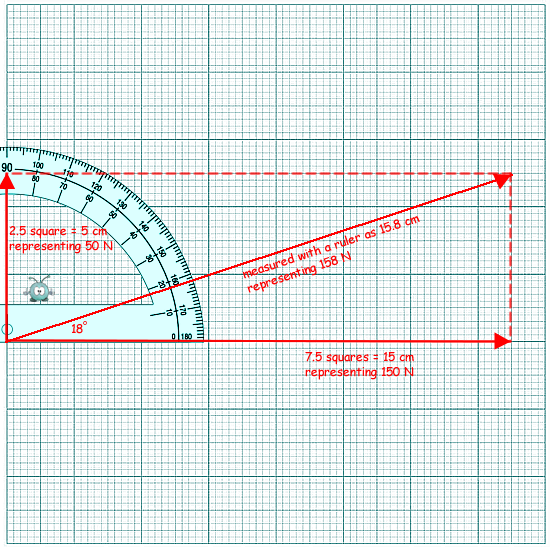GCSE Questions: Forces Q8. The diagram shows a boat floating on the sea. The boat is stationary.
(a) Here is part of the free body diagram for the boat.
[2 marks]
[4 marks] (b) When the boat propeller pushes water backwards, the boat moves forwards. The force on the water causes an equal and opposite force to act on the boat. Which law is this an example of? Newton's Third Law (of motion) [1 mark] (c) The diagram below shows the boat towing a small dinghy.
The tension force in the tow rope causes a horizontal force forwards and a vertical force upwards on the dinghy. horizontal force forwards = 150 N vertical force upwards = 50 N Here is a piece of graphpaper. Use it to draw a vector diagram, to scale, in order to determine the magnitude of the tension force in the tow rope, and the direction of the force this causes on the dinghy.
You have to draw a scale diagram - 150 and 50 are needed - but the grid on the graph paper is 8 by 8
It is sensible to choose 1 cm = 10 N (or one full square division of graph paper represents 20N). That is making your scale diagram as large as possible You have to draw the vectors very carefully and construct the resultant vector. See the graph paper.
We can calculate the values to check our drawing: Using Pythagoras x2 = 502 + 1502 x2 = 2500 + 22500 =25000 x = √25000 = 158.11 Using trig tan θ = 50/150 = 1/3 θ = tan-1 0.333 = 18.43o [4 marks] [11 Marks TOTAL] |
Follow me...
|









